Olive growing in Argentina
In the Americas, Argentina is the leader both as producer and exporter of olive oil and table olives. Across all provinces, modern production systems co-exist with traditional systems. Modern farming systems, such as intensive or super-intensive farming, are the models generally applied in the various olive growing regions of this country
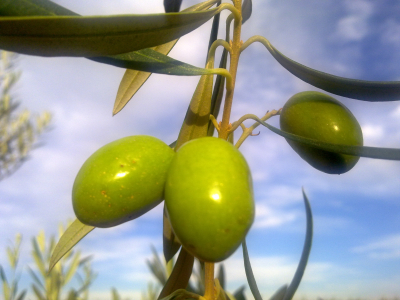
At the invitation of the Argentine authorities, the 107th session of the Council of Members will be held in Buenos Aires (Argentina) from 18 to 21 June 2018. Argentina was the first country of the Americas to accede to the International Agreement on Olive Oil, in October 1965, and it continues to participate actively in the implementation of the successive International Agreements on Olive Oil and Table Olives and in the working groups set up to examine the Organisation’s activities. In 2018 it holds the presidency of the IOC.
In the Americas, Argentina is the leader both as producer and exporter of olive oil and table olives. It has an estimated olive acreage of 90 000 hectares, most of which is irrigated. Approximately 50% of this area is used to grow olive varieties for olive oil, 30% is used to produce table olives, and 20% for dual purpose olives. The largest olive growing areas are found in the provinces of La Rioja, in the lead with 27.8% of the total olive growing area, followed by Mendoza (22.9%), Catamarca (20.8%), San Juan (20.2%), Cordoba (5%), Buenos Aires (2.8%) and lastly Rio Negro (0.6%).
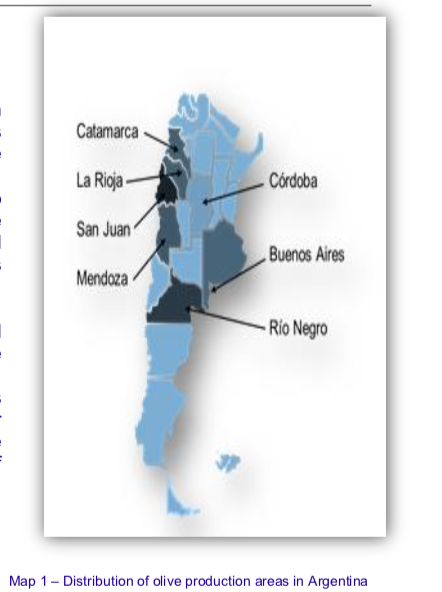
The two main industrial activities of Argentine olive production, table olive processing and olive oil extraction, are very important for the development and growth of the regional economy. They both have strong roots in the country, dating back to the Hispanic period in Argentina, endowing the products from each region with unique characteristics and specific attributes.
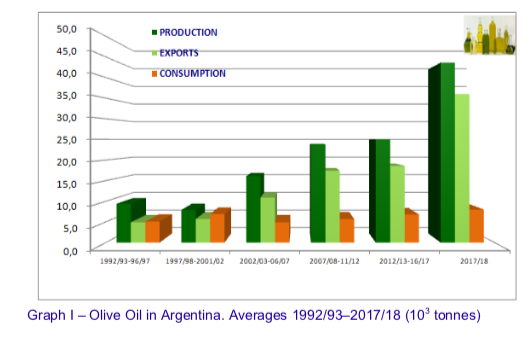
Graph I shows the trend in the last 25 crop years, reaching an average olive oil production of 25 000 t in the last five year period (2012/13 – 2016/17). The 2017/18 crop year reached record highs with 43 600 t, of which the majority of production was extra virgin olive oil. Consumption has remained stable, with average volumes of 6000 t.. Exports have however increased considerably, going from 4900 t in 1992/93–96/97 to 18 600 t in 2012/13–16/17. In the 2017/18 crop year, exports are expected to rise above 36 000 t, which would be a 116% year-on-year increase. Argentina exports to more than 27 countries. The main destinations of Argentine olive oil are the American continents with 63% of its exports, of which 41% go to the United States; the second destination is the European Union with 37%; and 1% goes to the rest of the world.
Over the last few decades, tradition and culture have led to investment in advanced technology that has given a new impetus to activities through extra-sectoral investments. This transformation has enabled the renewal of traditional plantations, extending the olive growing surface and incorporating new varieties, with localised irrigation and mechanical harvesting equipment. In parallel, the production industry has adopted state of the art processes and technology to accompany growth in the sector.
Argentina has five IOC-recognised laboratories: two for physico-chemical testing and three for sensory analysis.
Argentina is home to various varieties of olive tree. Among the producer regions: “Arbequina”, “Manzanilla” and “Coratina” are found in the Catamarca region; “Arbequina”, “Manzanilla”, “Barnea”, “Picual” and “Frontino” in La Rioja; “Arbequina”, “Manzanilla”, “Barnea”, “Picual” and “Hojiblanca” in San Juan; “Arbequina”,”Arauco”,”Farga” and “Empeltre” in Mendoza; “Arbequina”, “Arauco”, “Frantoio”, “Farga” and “Manzanilla” in Cordoba; and “Arbequina”, “Frantoio”, “Picual” and “Changlot” in both Buenos Aires and Rio Negro. The Cuatricentenario olive tree (four-hundred year old olive tree which is considered to be the mother plant for olive trees in this region) is found in the region of Arauco, in the province of La Rioja. This region gives its name to Argentina’s internationally renowned olive variety.
This regional economy has a considerable export bearing. In 2017 exports were valued at USD FOB 222 834 815, for a year-on-year increase of 52.97%
The table olive sector has undergone strong growth. Graph II shows the trend in the averages for the last five five-year periods, going from an average production of 39 600 t to 97 800 t, which is a 147% increase, reaching a maximum average production in 2007/08– 2011/12 of 131 000 t. Consumption has increased in recent crop years, settling at around 40 000 t. Exports follow the same trends as production. The main destinations of Argentine exports are Brazil, where it is the main supplier, followed by the United States, Chile and Uruguay.
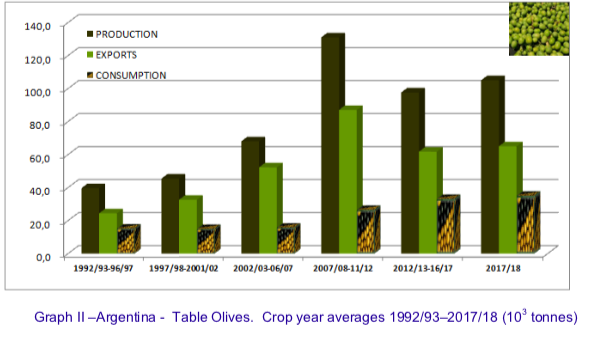
Key facts about the production sector in Argentina
Across all provinces in Argentina, modern production systems co-exist with traditional systems. Modern farming systems, such as intensive or super-intensive farming, are the models generally applied in the various olive growing regions of this country. Low-density intensive domains have plantation frameworks of 200 to 800 trees/ha of varieties that are mainly used for the production of extra virgin olive oil. Irrigation is localised and pruning and harvesting are mechanised. Average expected output is of 10 tonnes of olives per hectare.
The super-intensive model, in orchards of more than 800 trees per hectare, is applied in areas in which the agro-climatic conditions restrict plant development. Lower-bearing and less robust cultivars, such as Arbequina or Arbosana, require shorter distances between rows and a rapid entry into production. In this model, rows are set at 5 to 2 m between plants.
In contrast, plantations using the traditional model have wide patterns with densities of 69 to 156 trees/ha. They are made up, in the main, of old Arauco cultivar olive trees, which are mainly used to produce table olives. Other characteristics of this system are: low use of technology, surface irrigation (basin or furrow) and manual harvests. In these plantations, the expected average output is estimated at 5–6 t of olives per hectare.
Regardless of the production model, the harvest begins at the end of January or the beginning of February and continues until the end of June, depending on the area and variety. The manual harvest begins in the northern provinces, mainly in La Rioja and in the Catamarca Valley, with the table olive varieties. From the end of March and until May, the olives for olive oil are harvested, generally using mechanised harvest processes. The harvest in the provinces in the south of the country is carried out from May–June. The mechanisation of the harvest of olives for oil has shown a growing tendency towards improving performance. For this reason, many producers are adapting their olive orchards to mechanical harvests by applying pruning techniques.
Photo by Luigi Caricato
To comment you have to register
If you're already registered you can click here to access your account
or click here to create a new account

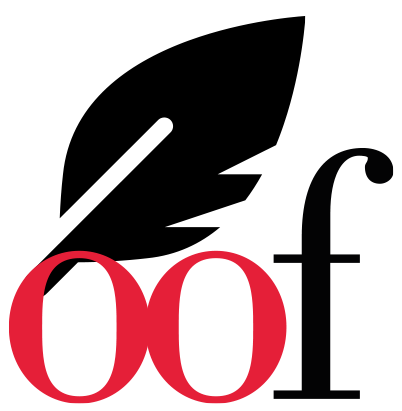
Comment this news